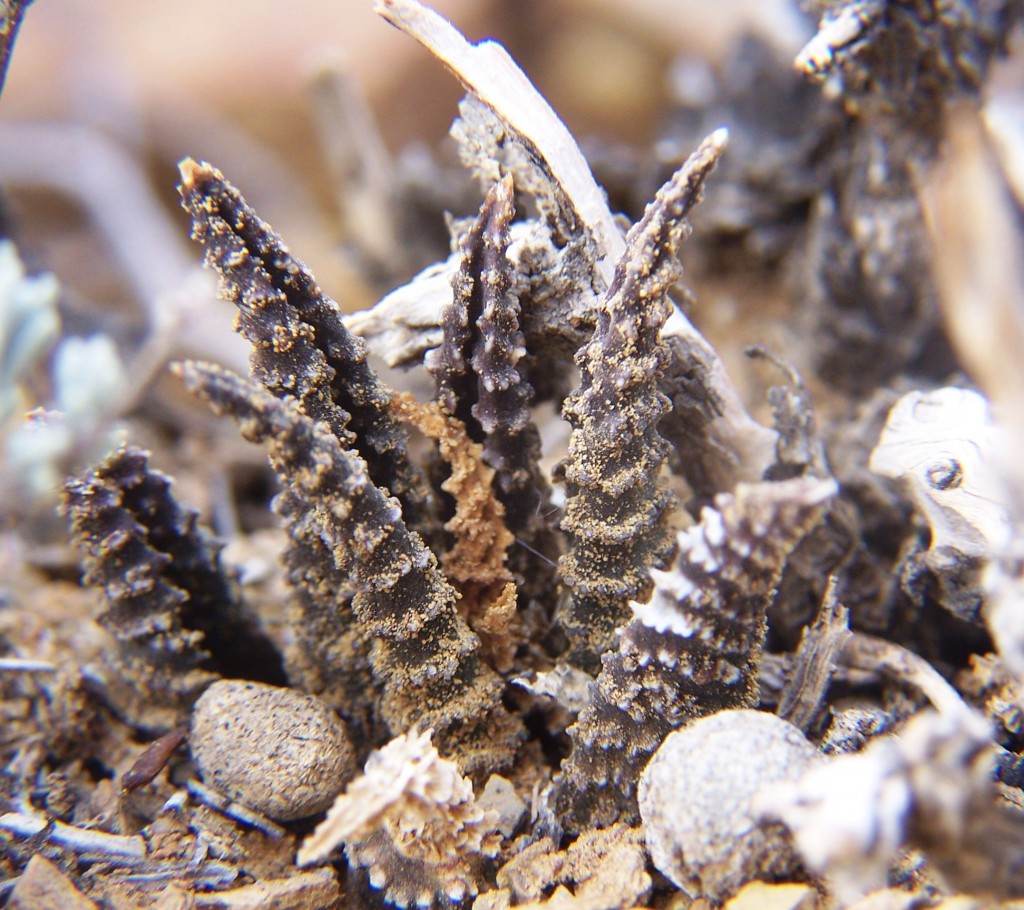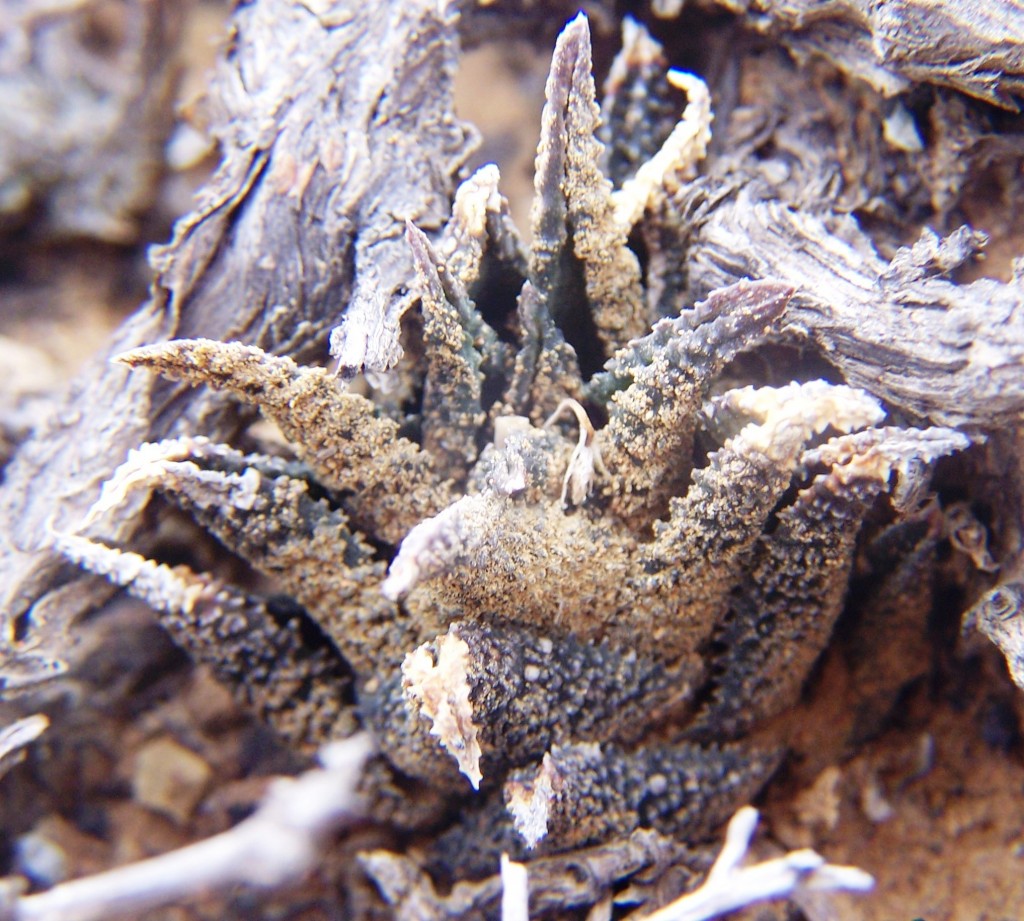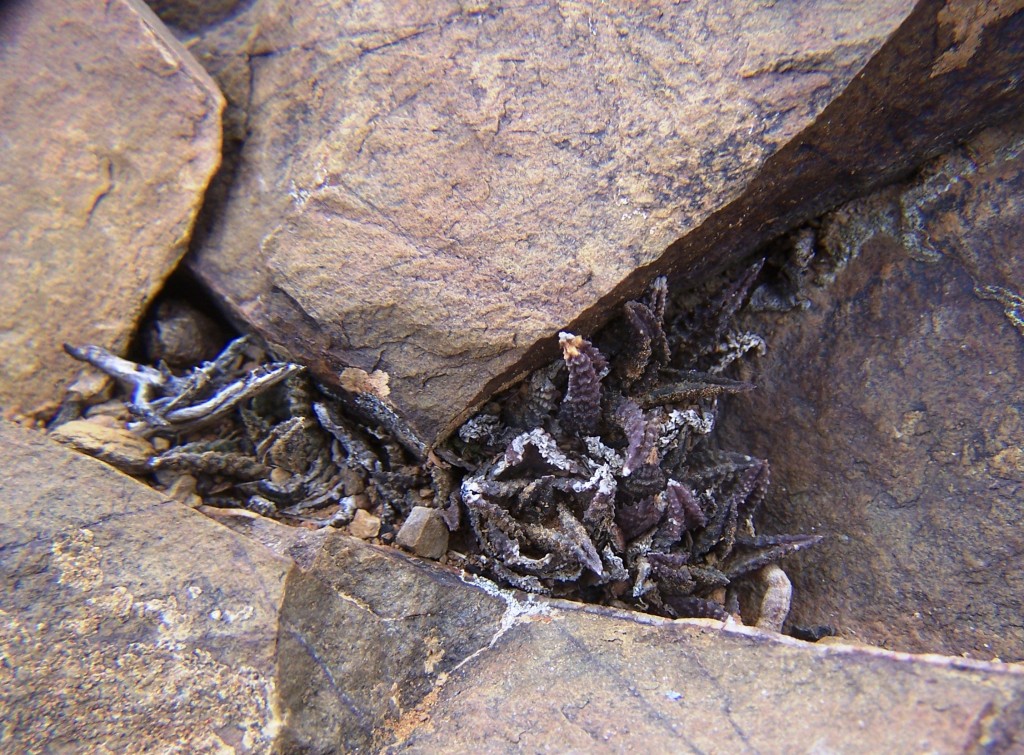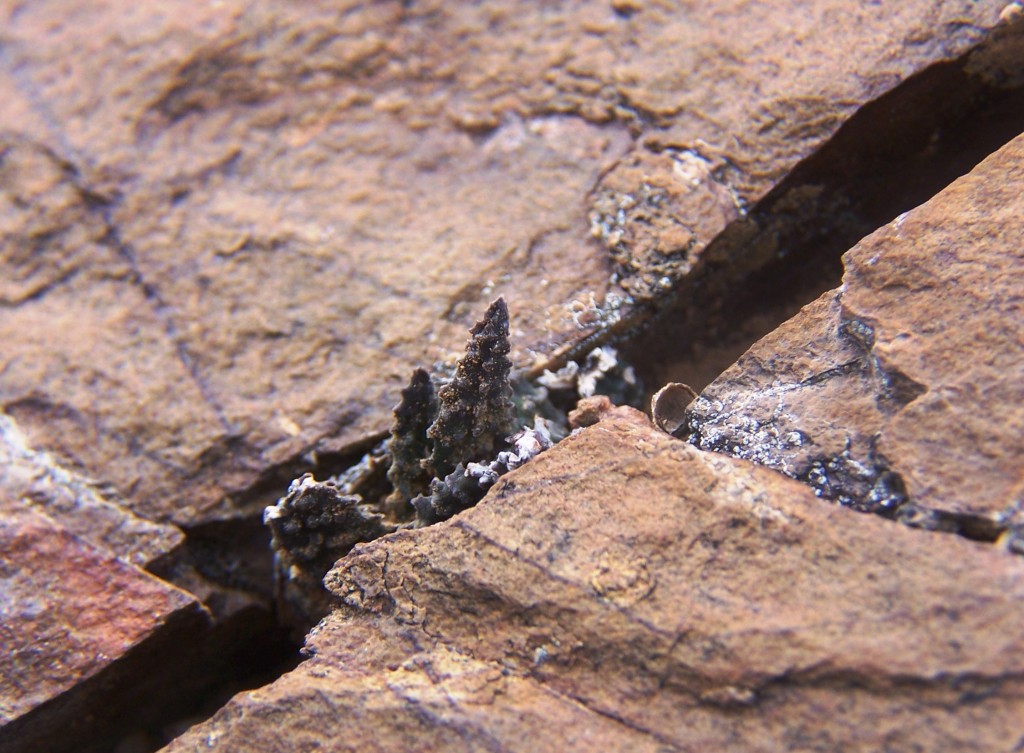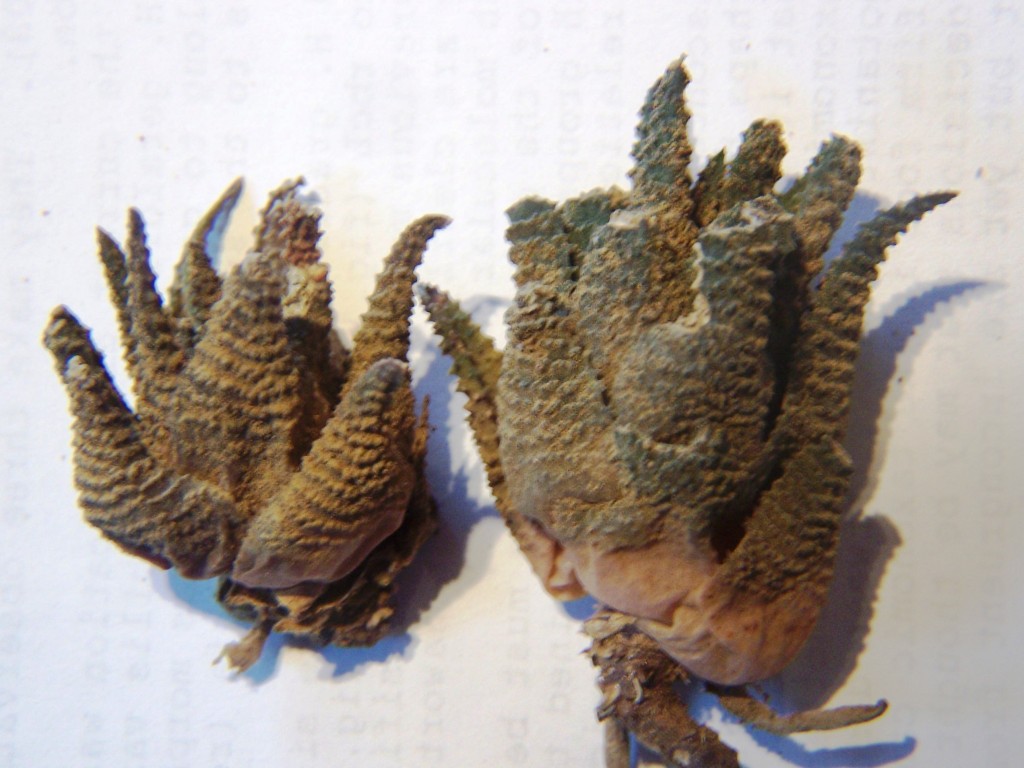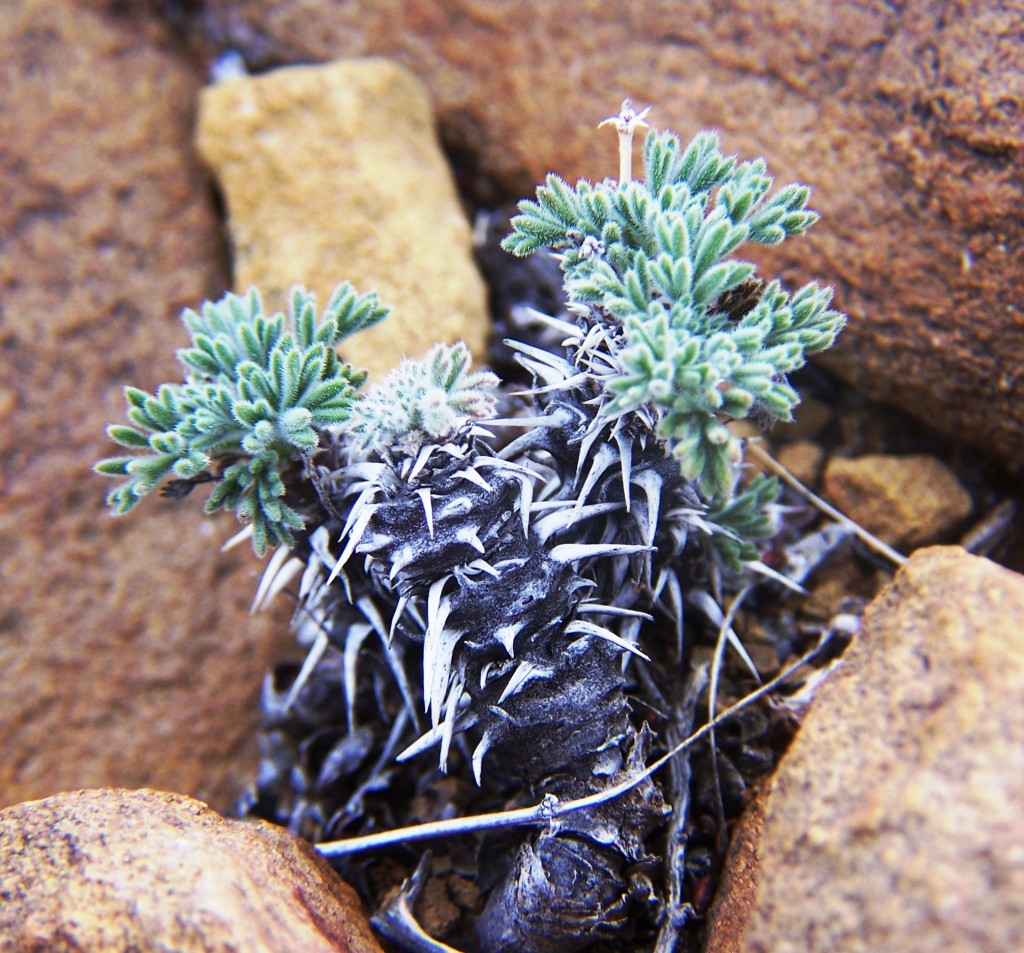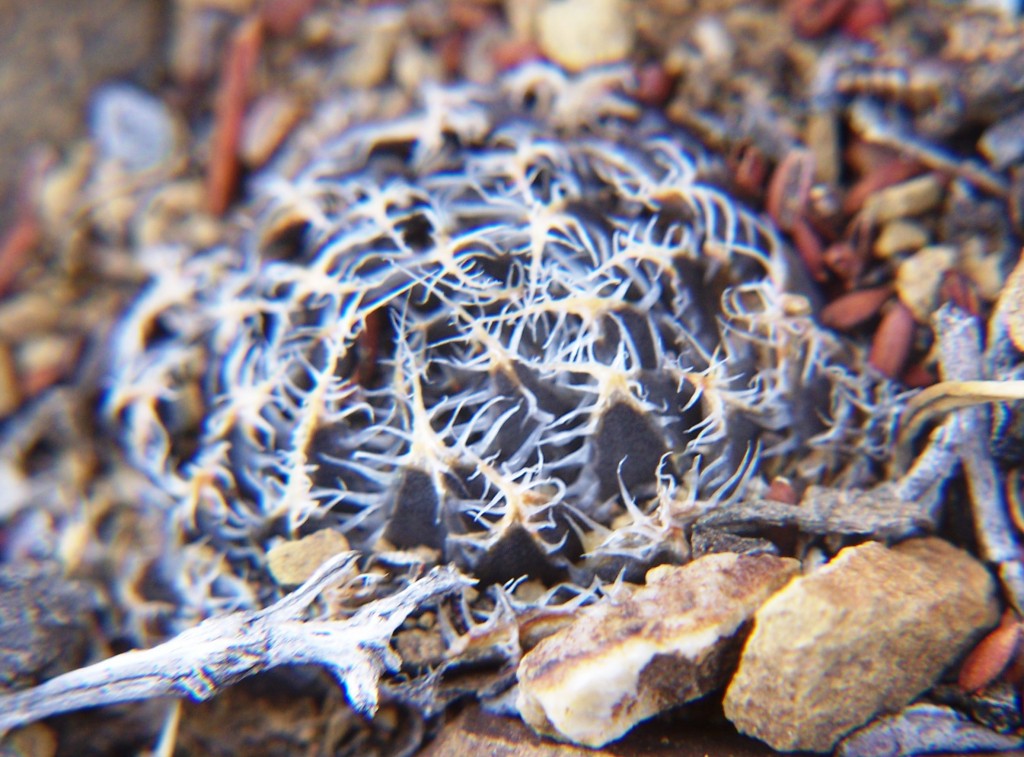Among a plethora of new names, are two really interesting items.
Firstly there is a really useful formalization of a host of old names by Gordon Rowley. This is something that I understood to be taken as unwritten truth and logic. While so sensible and practical it almost widens the gulf between the ordinary way we use names to communicate, and the unreal world of formal taxonomy. I will just give the one example to demonstrate this viz. H. coarctata subsp. coarctata, var. grandicula ‘Baccata’, or H. coarctata subsp. coarctata ‘Grandicula’ ‘Baccata’. This is a probable botanical truth where in the end there is a population (yet to be formally identified) in which all the plants despite any variability are ‘grandicula’ and something in cultivation (and not wholly improbably in some similar incidences, two quite different clones) that on the available evidence seems to have been drawn from the same population, which is ‘baccata’.
The second item is the name H. schoemanii. Described by M. Hayashi in Haworthia Study (9:14, 2003), it was said to have one of two close allies viz. H. woolleyii and an H. crausii. This latter ‘species’ I did not know, or of. Gerhard Marx kindly sent me the picture that appears in Haworthia Study (4:8, 2000) and I really do not know why this is compared with H. woolleyii. I would say that it also collapses in the same way and into the same place as ‘Schoemanii’. Most of the other new names I have been able to assign with very little stress into my own understanding of the system of plants that falls in Haworthia. However, the illustration of this plant and the comparison with H. woolleyii, again stretches the limits of credibility. It was said to have been collected on a hill near Dwyka Station. I must confess that the report that Hayashi found this species by himself is one I find very hard to accredit, being familiar with his modus operandi and field familiarity. When I was at Dwyka station myself I was under the impression that the plants had been collected by Paul Schoeman for whom it is named. Had I known the facts I would have been even more skeptical that it had in fact been collected there. It is said to have thinner and shorter leaves than H. woolleyii and the stem not to elongate as in H. granulata. I consider this to be fairly threadbare stuff in as much as the number of leaves is not brought into the equation and neither is the variability of H. granulata. At Skitterykloof, Avondrust and Karooport, the plants do not form stems as they do in Verlatenkloof or the Koedoesberg. At Patatsriver the plants are stemless too and the leaves are fairly thin and erect (This may be the source of ‘Crausii’). A Harry Hall collection from Skitterykloof was of stemless plants with very long and thin leaves. I would not say that H. woolleyii makes dense clumps by rhizomes as Hayashi states. But it does have many long thin leaves broadening of course at the base. It does cluster, but by offsetting aboveground and very close to the crown of the plant as does H. attenuata for one. This can barely be stated to be rhizomatous, which implies an elongated self-rooting horizontal stem with food storage. The term stoloniferous is applicable to the underground trailing stems or even root-like structures that eventually manifest as new rosettes and that occur in several Haworthia species. Plants with elongated stems can also be found in H. venosa subsp. tessellata and stoloniferous forms are also common.
Anyone else who really and genuinely wants to understand plants in the context of relationships and a realistic classification is now faced with the same problem as myself and one of some magnitude. That magnitude is of course only measurable in terms of individual knowledge and experience of the South African vegetation and geographical reality.
Where now is Dwyka Station? It is between Beaufort West and Laingsburg and centre to an area that barely raises a blip in the context of the species rich South African flora. What happens there geologically, geographically, historically, botanically? I am not going to attempt to answer the question in any detail except to comment that there is absolutely nothing in my own database to suggest that there could be any new species of Haworthia there – of any kind, – let alone one that looks so like ‘woolleyii’ by author statement and by my own imaging of the illustration.
Firstly one has to consider that ‘woolleyii’ occurs as a single known population east of Springbokvlakte far to the east and south. It has other species associations there. Secondly it is vested in the classification of H. venosa for the very reason that it has an uncomfortable resemblance to the subsp. ‘tessellata’ (the fact that this classification of subspecies is in doubt is irrelevant and is only as valuable as the ‘looks like…’ observation).
Now I did not find anything in my very brief visit to Dwyka Station itself except to confirm my view that there is absolutely nothing there to suggest an environment in which something as fundamental as a different Haworthia species could ever have evolved or survived in terms of vegetation and historical changes. Hayashi writes that he found five clones on “the mountain slope near Dwyka station”. The slope at Dwyka Station barely passes mention as that of any mountain and is mostly contained in rail reserve that is severely impacted on. I should add that we could only identify Dwyka station by virtue of the abandoned ganger’s cottages and there is a possibility that Hayashi was referring to the power substation about a kilometer away where we also looked. There may be a few plants there at either place but it was extremely dry and the absence of any other vegetation of any interest at all discouraged anything else but a fairly brief but intensive search by the three of us. In my experience, Haworthias never occur in such depauperate environments. So we went a little further west to near Koup Station, rather than spend time trying to access ownerships and nearby hillsides that could have been more fruitful than immediately Dwyka Station. Koup is of course the location for H. arachnoidea var. scabrispina, fig. 6, and also for H. nortieri (Oh dear!) var. pehlemanniae ‘Albispina’ (?) or should I have written H. nortieri var. globosiflora ‘Pehlemanniae’ ‘Albispina’. Remember that H. nortieri ‘deVriesii’ (in the bounds of a more realistic language) occurs at Prince Albert to the southeast.
I was accompanied by my wife Daphne, whom I mention extremely reluctantly in the crucible of a fairly dubious lot of writers, literature and connotation. She has a mind and eye uncluttered by taxonomic perturbations and has developed a vegetation penetrating and interference defying Haworthia locating radar. So at Oskopvlakte west of Koup she found plants that must surely explain H. schoemanii. What is as unpeculiar about Oskopvlakte and Dwyka Station is that they are on the boundary of the winter rainfall biome and the edge of the Succulent Karoo domain within that. (I deliberately correct the formal botanical concept of the biome status of the Succulent Karoo where history and causation seem to be confused). While Daphne was finding haworthias I was looking at Conophytums, Pelargoniums (the obligate winter rainfall growers) figs. 6-7, as well as other species familiar to me such as Astroloba bullulata, and thinking “Yes, this is Tanqua Karoo stuff”. Then Daphne called me. What is the plant she found? Wholly reminiscent of H. venosa subsp. granulata, figs 1-5, that is known to me from only about 12 widely scattered populations on the periphery (refugial and mountaineous) of the Tanqua Karoo. The nearest populations to Koup (Oskopvlakte) east of Laingsburg are at Avondrust southeast of Touws River, and Patatsriver WNW of Matjesfontein. Distance can be said to be a factor, but not in view of the overall distribution of H. venosa and its allies in any taxonomic dispensation. To my jaundiced eye ‘Crausii’ could equally easily be explained by these Oskopvlakte plants.
So for the collector I would suggest the label as simply H. ‘Schoemanii’, without the ‘H’ and even without the capital ‘S’, and most importantly of all, without any derogation of the late Paul Schoeman who was well known to me and against whom I have no ill-will of any kind. My only complaint is that his name has been dragged into the realm of botanical reality in the way that it has.
I actually have no interest whatsoever in taxonomy and nomenclature apart from their evil necessity. I just felt it was incumbent on me to make known some of the obvious problems of identification and use of names in the sphere of plants that I like. So this foray out of retirement is simply necessitated by an original motivation that can never go away any more than that the name ‘schoemanii’ will, and this is reasonably so in terms of human interest.
Acknowledgement
Dr. Gerrit Visser, who made this excursion possible, Daphne whose company I value, Mr. Adriaan Botes of Oskopvlakte, who so graciously and kindly gave us access to his farm. Gerhard Marx kindly sent me the copied description of ‘Schoemanii’ and ‘Crausii’ (The latter wholly in Japanese). He also kindly commented and offered some corrections to the manuscript. ♦
